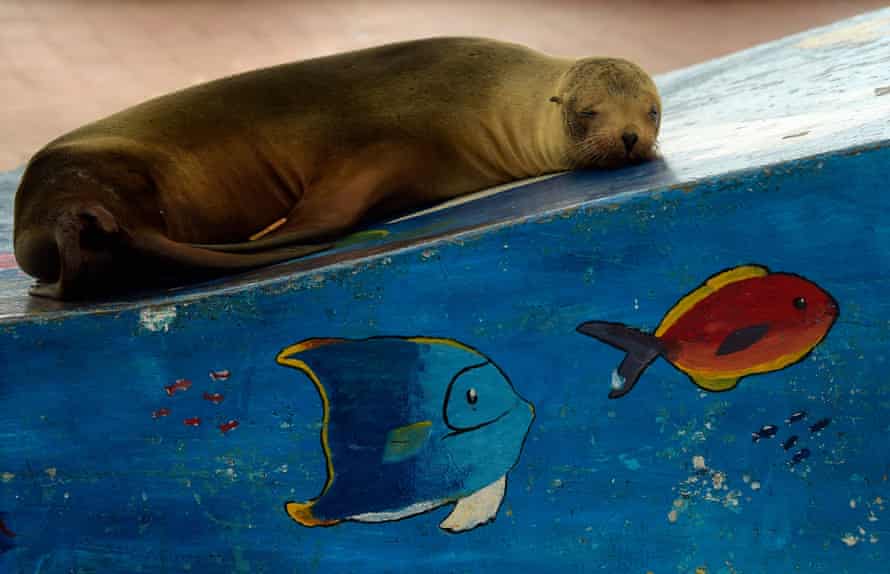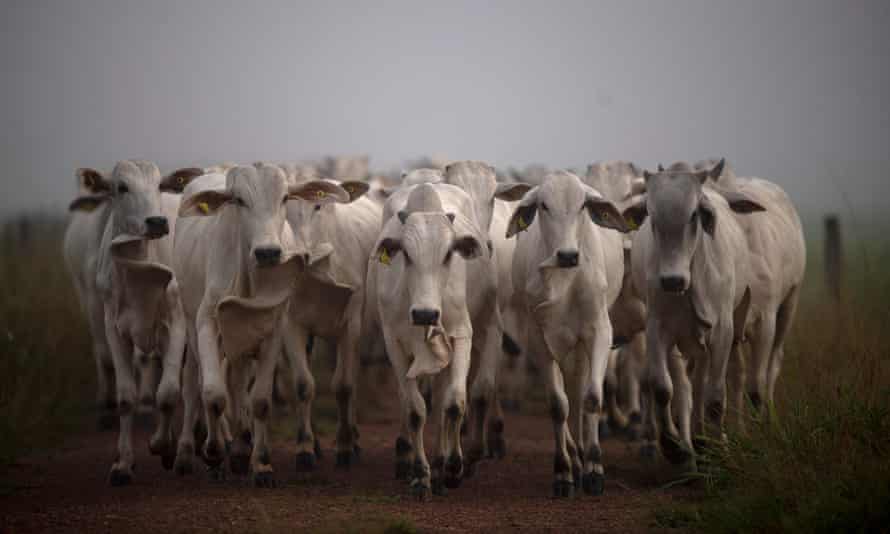Scorpion plagues, sharks on the move: has Cop26 done enough for nature?
The summit did not go far enough to avoid ‘big changes’ in the natural world, scientists warn, with animals already changing their behaviour

If the natural world was trying to have its say on the Glasgow climate pact, the arrival of a plague of scorpions in Egypt as Cop26 came to an end was not a subtle message. Around the time a tearful Alok Sharma lowered the gavel on the summit, rare thunderstorms were sweeping through Aswan province along the south of the Nile, forcing thousands of the creatures to seek shelter in people’s homes. Scorpion stings left more than 500 people needing hospital treatment in the host nation for Cop27. Nobody died from the effects of the venom and, as is often the case, it is too early to say whether the climate crisis caused or intensified the flooding. But many experts warn we are at the beginning of a period of potentially biblical instability.
“Cop26 was bad for nature because we are nowhere near limiting warming to 1.5 degrees,” said Simon Lewis, a professor of global change science at University College London who was supporting Congo basin countries in Glasgow. “Double the number of species will lose more than half of their climatically defined area at 2C than they would have at 1.5. So big changes are coming.”
Q&AHow are the climate and biodiversity crises linked?Show
Our biosphere – the thin film of life on the surface of our planet – is being destabilised by temperature change. Extreme weather events are becoming more common, with flooding, sea level rises, droughts and storms all affecting biodiversity and its ability to support us. In the ocean, heatwaves and acidification are stressing organisms and ecosystems already under pressure from human activities such as overfishing and habitat fragmentation.
The landmark Intergovernmental Panel on Climate Change (IPCC) report showed that extreme heatwaves that would usually happen every 50 years are already happening every decade. If warming is kept to 1.5C these will happen approximately every five years.
The effect of the climate crisis on the Earth’s biodiversity is already being seen. The distributions of 47% of land-based flightless mammals and almost a quarter of threatened birds may already have been negatively affected by the climate crisis, the IPBES (Intergovernmental Science-Policy Platform on Biodiversity and Ecosystem Services) warns. Five per cent of species are at risk of extinction from 2C warming, climbing to 16% with a 4.3C rise.
Scientists increasingly argue the climate and biodiversity crises are linked. The destruction of the planet’s carbon-rich habitats, such as peatlands, forests, wetlands and grasslands, is damaging biodiversity and releasing vast amounts of greenhouse gases.
If 15% of the world’s most degraded land was restored, and the remaining habitats which are still in good condition protected, it could store a third of all greenhouse gas emissions created by humans since the Industrial Revolution, according to researchers.
There were significant announcements on nature at Cop26 that could move the dial on global heating and biodiversity loss. Jair Bolsonaro, Xi Jinping and Vladimir Putin were among more than 100 world leaders to commit to halting and reversing deforestation and land degradation by the end of the decade, covering about 85% of the world’s forests. Meeting this target would avoid emissions equivalent to a quarter of global greenhouse gases from transport between 2009 and 2019, according to the World Resources Institute. Multibillion-dollar funding commitments were also made to protect vast carbon sinks such as the Congo basin. Four Latin American countries joined together to create an enormous marine reserve in the Pacific. Indigenous peoples were given $1.7bn (GBP1.26bn) in recognition of their role in protecting forests.

But even during the summit, some of these paper commitments began to lose their gloss. Indonesia’s environment minister Siti Nurbaya Bakar said the deforestation pledge was “inappropriate and unfair” just days after it signed up. Others, many of whom have made deforestation commitments before, have not yet explained how they will monitor land-clearing reductions or what ending and reversing deforestation even means.
Then there is the issue of trust.
“Our commitments are real. We have – by far – one of the most ambitious NDCs [nationally determined contributions] in the world,” said Leonardo Cleaver de Athayde, Brazil’s lead climate negotiator, on his way home from Glasgow, when asked if the world could really believe the deforestation pledge made by Bolsonaro’s government. Deforestation in Brazil’s Amazon rainforest soared 22% in the past year to the highest level since 2006, according to the government’s annual figures, released this week. Campaigners have warned Brazil’s cattle ranching plan will drive further land-clearing via the back door.
The link between nature and the climate was a clear theme in Glasgow and did make the final decision text, despite division over the wording.

In June, a report from 50 of the world’s leading scientists warned humanity must solve the climate and nature crises together or solve neither, something which the UK presidency had clearly embraced. There were peatland-themed pavilions and dozens of events on nature conservation and the climate.
But battles over the role of nature in carbon offsetting and so-called nature-based solutions were not resolved in Glasgow, and will continue at the UN’s biodiversity Cop in Kunming, China, next year. And despite frequent references to the importance of respecting the rights of indigenous peoples, many of those communities want to see action rather than words.
Meanwhile, evidence of the intertwined fates of the Earth’s climate and the natural world continues to mount. In western Canada, the same areas that endured a summer heatwave of temperatures above 45C and wildfires are now experiencing heavy flooding. In the Andes, guanacos – close relatives of llamas – are heading to lower ground in search of better grazing because of the changing climate. Great white sharks are moving to new areas. So too are polar bears, leading to increased conflict with humans.
But unless humans cut greenhouse gas emissions, experts are clear that these changes are just the beginning and present a major threat to the natural world.
“We’re going to see changes in land use. Anywhere there’s biodiversity or wildlife in the way has a real potential for new conflicts that weren’t there before,” said Alexandra Zimmermann, a senior research fellow at the University of Oxford’s Wildlife Conservation Research Unit. “Climate events are sudden. Like the scorpion example, this is exactly the sort of thing we would see more of.”
Find more age of extinction coverage here, and follow biodiversity reporters Phoebe Weston and Patrick Greenfield on Twitter for all the latest news and features
